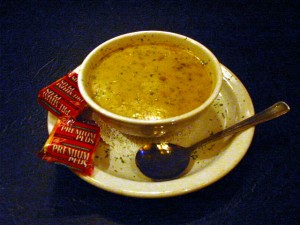by Jakki Aviles
 David Alan Tepper, founder of Appaloosa Management L.P., has recently announced that, through the David Tepper Charitable Foundation, he will be making a $3 million gift to Feeding America, one of the nation’s largest organizations that fight hunger.
David Alan Tepper, founder of Appaloosa Management L.P., has recently announced that, through the David Tepper Charitable Foundation, he will be making a $3 million gift to Feeding America, one of the nation’s largest organizations that fight hunger.
Tepper’s philanthropy did not start with hunger-relief organizations. A gift he is probably best known for is his record $55 million gift to Carnegie Mellon’s business school. Tepper attended the school to receive his MBA, but certainly did not come up with the idea for the gift completely on his own. He was prompted by a friend and former professor, Kenneth Dunn, to donate. Tepper was convinced, but was also driven by naming capabilities– the school is now named the David A. Tepper School of Business.
Friends, however, seem to be the main source of motivation behind Tepper’s generous gifts. According to the Clark-Garwood Patch, Tepper was introduced to the hunger-relief area of philanthropy by a friend, Kathleen DiChiara, who is the founder and president of the Community FoodBank of New Jersey. She asked Tepper for his help in a campaign and he, in turn, got together $2 million between himself and others in his company.
According to an article in PR Newswire, the FoodBank is part of a larger network: Feeding America. Through being introduced to the hunger movement in his home state by Ms. DiChiara, Tepper was made aware of a larger cause that was in need of gifts. Feeding America tapped into a valuable source in Mr. Tepper. He is motivated by the causes his friends encourage, and was already donating to Feeding America’s hunger movement on the local level.
Perhaps the most interesting and valuable aspect of a donor like Tepper is his enormous wealth. The David Tepper Charitable Foundation first became interested in hunger in 2006. In a rather short amount of time, the Foundation moved from a local charity to donations to the national charity. As Tepper’s giving progression has shown, he is capable of giving to all sorts of hunger charities and does not need to be dedicated to just one. His wealth allows him to give on a level that many only dream about.
Tepper’s wealth and wide-range of interests should be a major clue-in for fundraisers looking for donors. As he has demonstrated, his engagement in charities like Feeding America is relatively new, and highly influenced by a friend dedicated to the project. As a fundraiser you need to be careful not to overlook the social networks within your reach. Although Tepper may not have come up with the idea to give to hunger based on his own inner passion for the cause, he is still giving– in large amounts. Who’s to say he could not be influenced to put his money into another great cause?
Are there any David Teppers lurking in your donors’ social sphere? Would you know if there were? Predictive modeling, wealth screenings and donor ratings all focus on the names you have in your database. The social reach of your board members and existing major gift donors might not reveal a David Tepper.
At Aspire Research Group we have helped organizations use prospect research to find their David Tepper in two ways:
(1) Researching an individual identified as wealthy and/or interested in the mission – Sometimes a fundraiser will read about a David Tepper in their community (you are reading local and philanthropy news sources, right?!) Through in-depth research, Aspire Research Group focuses on business, volunteering, giving and social relationships. Using this information the fundraiser can begin to connect the dots back to her organization, with Aspire Research Group providing quick follow-up answers as part of the profile service.
(2) Exploring the relationships of someone known to the organization – Especially with major gift donors, a fundraiser will come to Aspire Research Group looking to find ways to leverage the donor’s business and social spheres of influence. Being informed before sitting down with the donor helps to keep the meeting focused and productive.
If you want Aspire Research Group to help you find your very own David Tepper, give us a call at 800-494-4132 or email jen at aspireresearchgroup dot com.
 It might not be “light” reading, but I still think you should go poolside with the suggestions from Helen Brown in her recent blog post Summer Reading: Wealth and Philanthropy.
It might not be “light” reading, but I still think you should go poolside with the suggestions from Helen Brown in her recent blog post Summer Reading: Wealth and Philanthropy.


